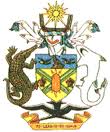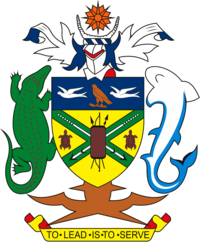Solomon Islands' Second National Communication
Project Overview
The creation of a National Communication offers countries the opportunity to contribute with technically sound studies and information that can be used for designing mitigation and adaptation measures, and project proposals that can and will help increase their resilience to the impacts of climate change. Activities generally include: V&A assessments, Greenhouse Gas Inventory preparation, Mitigation Analysis or Education, and awareness raising activities. The ultimate goal is the integration of climate change considerations into relevant social, economic and environmental policies and actions.
In attempting to integrate adaptation strategies into its sustainable development agenda, Solomon Islands will be confronted by many challenges including insufficient resources, prioritization of adaptation measures and uncertainties over climate change projections and adaptation strategies. The Solomon Islands has determined, through a broad national consultative process, that agriculture, human settlements, water and sanitation and human health are priority vulnerable sectors requiring urgent support to enhance resilience against the predicted impacts of climate change. The most significant impacts of climate change for the Solomon Islands are expected to be due to the effect of rising temperatures on flora and fauna and sea level rise.
To view progress on the Solomon Islands' SNC click here.
Project Details
Climate change will be a major impediment to the achievement of sustainable development in Solomon Islands, as all economic and social sectors are likely to be adversely affected, and the cost of adaptation will be disproportionately high, relative to gross domestic product (GDP). In attempting to integrate adaptation strategies into its sustainable development agenda, Solomon Islands will be confronted by many challenges including insufficient resources, prioritization of adaptation measures and uncertainties over climate change projections and adaptation strategies.
The need to implement adaptation measures with some urgency has been often reinforced by the adverse impacts already being experienced in the country and highlighted in numerous national and regional workshops, meetings and conferences. It has been suggested that risk-reduction strategies together with other sectoral policy initiatives in areas such as sustainable development planning, disaster prevention and management, integrated coastal zone management and health care planning should be employed. The Solomon Islands National Adaptation Plan of Action (NAPA) has determined, through a broad national consultative process, that agriculture, human settlements, water and sanitation and human health are priority vulnerable sectors requiring urgent support to enhance resilience against the predicted impacts of climate change.
The majority of the population of 571,000 live in rural areas and are predominantly dependent on agriculture, forestry and fisheries for food security and livelihoods. The 84% of people living in rural areas (World Bank 2007) rely mainly on their traditional food production systems, traditional knowledge, and strong communal systems and on agriculture, fishing and small business activities to support livelihoods. The majority of rural dwellers reside on hilly and mountainous areas and along very low lying coastal areas with very high exposure to abnormal and extreme weather and climatic events.
The Coalition of National Unity and Rural Advancement (CNURA) Government Statement of Policy, delivered to the country by the Prime Minister on 18 March 2008 includes as national objective “to ensure the sustainable utilization and conservation of natural resources and environment and successful adaptation to climate change”. This policy commitment was further strengthened by the Cabinet endorsement of that NAPA in late 2008. The Ministry of Environment, Conservation and Meteorology (MECM), through its Climate Change Division, coordinates the implementation of the government policy on adaptation to climate change, key priority areas of NAPA, and disaster risk reduction and climate change adaptation strategies. The MECM Corporate Plan 2008-2010 is undergoing review with views of integrating NAPA priority areas and climate change adaptation.
There are a variety of initiatives designed to assist the Solomon Islands in assessing and documenting vulnerabilities and in finding adaptation solutions that are acceptable to the local communities. For example, a grant has been provided to the Solomon Island Development Trust (SIDT) supported the Babanakira and Kolina people in enhancing traditional coping strategies to build their resilience to cope with disasters, merging these practices, where necessary, with modern scientific and technical knowledge. Traditional leaders of the Ontong Java and Sikaiana atolls have raised the alarm on low fresh water supply and taro crops not growing well as their islands begin facing the full effects of climate change. Moreover, there are also a number of adaptation programmes still in the proposed state. Current activities include: community initiatives (e.g. raised beds) to address extreme seasonal high tides, sea level rise and soil improvement programmes; mangrove replanting (on a very low scale); rain water harvesting; establishment of root crop bulking and distribution; the introduction of salt tolerant and drought resistant crop varieties; mass propagation of available planting material; and soil improvement programmes.
An important contribution at the regional and community level is the Pacific Adaptation to Climate Change Project (PACC). The project is designed to promote climate change adaptation, and is based on the premise that adaptation is a key pre-requisite to sustainable development in Pacific Island Countries. One of the few projects globally to access the Special Climate Change Fund of the GEF, this Regional UNDP/GEF Project covers 13 countries (including the Solomon Islands) and is being implemented by SPREP. The objective of the PACC is to enhance the resilience of a number of key development sectors (food production and food security, water resources management, coastal zone, infrastructure etc.) in the Pacific islands to the adverse effects of climate change. This objective will be achieved by focusing on long-term planned adaptation response measures, strategies and policies. To ensure sustainability of the project, regional and national adaptation financing instruments will also be developed.
Adaptation Needs and Priorities
- Subsistence and Commercial Agriculture: An increase in the duration, frequency and intensity of cyclones, along with salt water intrusions, would decrease crop yields. Potential adaptation actions include: (1) National Food Security Program and provincial food banks, (2) Crop diversification, (3) Research into and breeding of salt-tolerant root crops and drought resistant crops, (4) Improved water and soil conservation programs, (4) Intercropping and hydroponics, (5) National urban fruit tree planting.
- Coastal Environments and Systems: Coastal areas may experience flooding and erosion, and coral bleaching may occur due to an increase in sea temperature. Mangrove forests are also at risk because the effects of sea level rise on their habitats. Potential adaptation actions include: (1) Protection of mangrove areas, (2) Re-vegetation of shore areas, (3), Resettlement of urban areas.
- Human Health: Some strains of malaria are endemic to the Solomon Islands, and eradication programs have thus far been inefficient. Extreme weather events, especially flooding, will create ideal conditions for mosquitos to breed and may increase the prevalence of malaria. Potential adaptation actions include: (1) Malaria awareness program, (2) Use of bed nets and mosquito eradication, (3) Improvement of medical services, (4) Capacity building for understanding the relationship between climate change and variability.
- Freshwater Resources: Climate change is expected to decrease the availability and quality of water resources. Potential adaptation actions include: (1) Increase in water storage capacity, (2) Conservation of water, (3) Centralized water treatment, (4) Identification of alternative surface and groundwater sources.
- Marine Resources: Increases in sea temperature are associated with smaller tuna catches, but there is little information about how these fish stocks will be affected in the future due to climate change. Potential adaptation actions include: (1) Marine breeding and restocking programs, (2) Quota system for tuna and subsistence fishing, (3) Comprehensive inventory of marine resources Climate Forecasting and Response, (4) Rapid response to disasters, (5) Strengthening capacity in hydrological services, (6) Weather forecasting and weather stations establishment.
-
Human Settlements: Potential adaptation action includes: Enhancement for communities to be able to plan for relocation.
-
Education and Awareness: Potential adaptation action includes: Incorporation of information in school curriculum.
References:
- IFAD IPAF Grants 2007. http://www.ifad.org/english/indigenous/grants/projects/regions/asia.html
- SPREP,http://www.sprep.org/climate_change/PYCC/deta.asp?id=489, Presentation given by Mr. Hudson Kauhiona and Ms. Jean Galo during the PACC Inception Meeting held at SPREP in Apia on the 29th June to 3rd of July 2009. Further information: SPREP,
- http://www.sprep.org/climate_change/PACC/reports_detail_country.asp?id=719 or SPREP, http://www.sprep.org/topic/climate.htm_
- Dohan, Rosemary; Hove, Hilary; Echeverría, Daniella; Hammill, Anne, Parry, Jo-Ellen. (2011) “Review of Current and Planned Adaptation Action: The Pacific.” Adaptation Partnership/International Institute for Sustainable Development, pp.129-140.
- Central Intelligence Agency [CIA] (2011). The Solomon Islands. The World Factbook. Retrieved from https://www.cia.gov/library/publications/the-world-factbook/geos/bp.html
- Solomon Islands Ministry of Environment, Conservation and Metorology [SIMECM] (2009). Solomon Islands National Adaptation Programmes of Action. Retrieved from http://unfccc.int/resource/docs/napa/slb01.pdf
- Solomon Islands Ministry of Culture, Tourism and Aviation [SIMCTA] (2004). Solomon Islands. Initial National Communications under the United Nations Framework Convention on Climate Change. Retrieved from http://unfccc.int/resource/docs/natc/slbnc1.pdf
Key Results and Outputs
- Sustainable development and the integration of climate change concerns into medium- and long-term planning
- Inventories of anthropogenic emissions by sources and removals by sinks of greenhouse gases
- Measures contributing to addressing climate change
- Research and systematic observation
- Climate change impacts, adaptation measures and response strategies
- Education, training and public awareness
Potential Adaptation Measures:
Agriculture and Food Security
- Improve and conserve soils
- Develop new crops
Water Resources
- Increase water supply, e.g. by using groundwater, building reservoirs, improving or stabilizing watershed management, desalination
- Improve or develop water management
Coastal Zones and Marine Ecosystems
- Protect, including building sea walls, and beach nourishment
Monitoring and Evaluation
In 1992, countries joined an international treaty, the United Nations Framework Convention on Climate Change, to cooperatively consider what they could do to limit average global temperature increases and the resulting climate change, and to cope with whatever impacts were, by then, inevitable.
Parties to the Convention must submit national reports on implementation of the Convention to the Conference of the Parties (COP). The required contents of national communications and the timetable for their submission are different for Annex I and non-Annex I Parties. This is in accordance with the principle of "common but differentiated responsibilities" enshrined in the Convention.
The core elements of the national communications for both Annex I and non-Annex I Parties are information on emissions and removals of greenhouse gases (GHGs) and details of the activities a Party has undertaken to implement the Convention. National communications usually contain information on national circumstances, vulnerability assessment, financial resources and transfer of technology, and education, training and public awareness.
Since 1994, governments have invested significant time and resources in the preparation, collection and validation of data on GHG emissions, and the COP has made determined efforts to improve the quality and consistency of the data, which are ensured by established guidelines for reporting. Non-Annex I Parties receive financial and technical assistance in preparing their national communications, facilitated by the UNFCCC secretariat.







